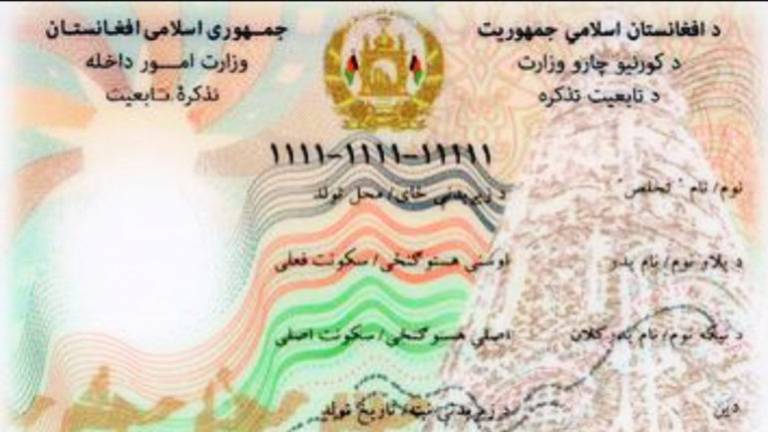A number of political leaders and activists have reacted against a decision made by the National Statistic and Information Authority (NSIA). In an unprecedented move, the NSIA has added a long list of names of non-Pashtun sub-tribes and names of some places in the database of e-Tazkira as independent identity groups.
A wave of objection began to make a trend on social media after a list of 54 non-Pashtun sub-tribes and small identity groups were added to the database chart of the e-Tazkira, which is issued by the NSIA at its fastest speed now. The sub-tribes newly added to the database mostly come from the ethnic Tajiks and Hazaras of Afghanistan.
Some critics call the move an awkward “non-professional” act that divides the nation.
In a statement issued yesterday, March 13, Afghanistan’s second vice president, Sarwar Danish said that the decision made by NSIA authorities questions the credibility of the government and it divides the nation.
Rahman Rahmani, the Parliament Speaker, also reacted against the NSIA act, calling it a “pre-planned move” aimed at dividing the ethnic groups at village and district levels. He blamed a “known circle” for this plot that divides the country.
The issue of group identity is a newly debated political topic in the political arena of the country which is home to diversely multi-ethnic identity groups.
“The NSIA must correct this mistake with consideration to the country’s major interest and unity of the Afghan people,” Chief of the High Council for National Reconciliation (HCNR) Abdullah Abdullah said in a statement issued today, Sunday, March 14.
Prominent political figures like former chief of the National Directorate of Security Rahmatullah Nabil, leader of Jamiat-e-Islami party of Afghanistan Sallahuddin Rabbani, and former Balkh governor Atta Mohammad Noor have also denounced the move—calling it an act that divides the country.
The NSIA, however, argues that it has included some new ethnic groups following official requests made by local elders of the “new ethnic groups”. Authorities at the NSIA justify the move as a constitutional act and in line with a court writ made by the Supreme Court.
Article number four of the Constitution says the Afghan nation is comprised of 14 plus ethnic groups.
This is not the first time, the debate over e-Tazkira turns into a disputable argument. The issue remains a matter of controversy between pro-Pashtun government officials and those who oppose it. Over the tenure of former President Hamid Karzai and then during the term of the National Unity Government inclusion of the word “Afghan” as a nationality for all citizens of Afghanistan sparked a hot debate.
On May 03, 2018, President Ghani ordered issuance of the e-Tazkira, with the “Afghan” being mentioned as a nationality of all the citizens despite a countrywide opposition, particularly that of the then NUG’s Chief Executive Abdullah.
The latest statistics available on the NSIA’s website suggest that the authority until Saturday, March 13, has issued a total of 2,916,910 e-Tazkiras to the Afghan citizens.
Mohammad Karim Khalili, the leader of the Hezb-e-Wahdat Islami party, has called the move a lawlessly political act. “Afghanistan is a country of minorities and no ethnic group can form a majority.”
Khalili said the act would fuel tension that adds to the country’s crisis.




